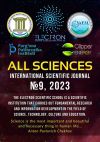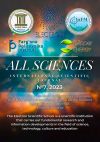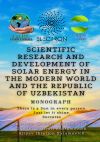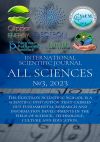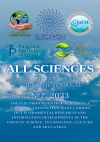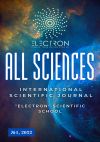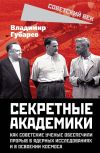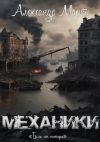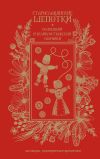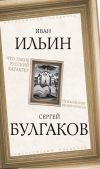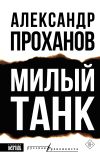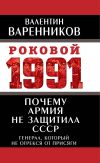Текст книги "Методическая разработка по английскому языку по специальности «Стандартизация, сертификация и метрология»"

Автор книги: Баян Исабаева
Жанр: Зарубежная образовательная литература, Наука и Образование
сообщить о неприемлемом содержимом
Текущая страница: 2 (всего у книги 9 страниц) [доступный отрывок для чтения: 2 страниц]
LESSON 4
Vocabulary
to bear a defined relationship to – иметь определенное отношение – белгілі өзара байланысқа ие болу
physical quantity – физическая величина – физикалық шама
with a reference to – ссылаясь – мәліметке сүйене
system of weights and measures – система весов и мер – салмақ және өлшем жүйесі
volume – объем – көлем
authority – уполномоченный орган – уәкілдік берілген ұйым
inaccuracy – неточность – дәлсіздік
confusion – путаница – араластыру; шатастыру; түсінбестік, білместік
internationally – standardized reference objects – стандартизированные на международном уровне ссылочные объекты – халықаралық деңгейде стандартталған сілтемелік нысандар
artifact – предмет, созданный человеком, артефакт, образец – адаммен жасалған зат; артефакт; үлгі
realization of the unit of measure – воспроизведение единицы измерения –өлшем бірлігін қайта жаңғырту
in terms – в отношении – жайында, жөнінде
physical constant – физическая константа – физикалық тұрақты шама
legal basis – правовая база – заңды негіз
to eliminate – исключить – жою, құрту, шығару
advantage – преимущество – артықшылық, басымдылық
damage – дефект, повреждение – ақаy; зиян, залал
intercomparison – взаимное сравнение – өзара салыстыру
quality standard – стандарт качества – сапа стандарты
secondary standard – вторичный стандарт – екінші реттік стандарт
working standard – общепринятый стандарт, техническая единица, рабочий стандарт, рабочий эталон, образец – жалпыға бірдей қабылданған стандарт, техникалық бірлік, жұмыс стандарты, жұмыс үлгісі
measurement equipment – измерительное оборудование – өлшеуіш жабдық
industrial – производственный – өндірістік
commercial – промышленный – өнеркәсіпті
gauge block – мерная плитка – өлшегіш тақта
measurement tools – мерный инструмент – өлшегіш жабдық
master kilogram – эталонный килограмм – эталонды килограмм
master – эталон – эталон
platinum – iridium alloy – платино-иридиевый сплав – платин-иридті қорытпа
to maintain – поддерживать, задавать – болысу, сүйеу
international bureau of weights and measures – международное бюро весов и мер – халықаралық өлшем және салмақ бюросы
cell electrochemical battery – солнечная электрохимическая батарея – күн электрохимиялық батареясы
stability – постоянство – тұрақтылық, өзгермеушілік, бірқалыптылық
precision – точность – дәлдік; бірдейлік
Josephson junction – переход Джозефсона – Джозефсон өтуі (қосылған жері)
output – выход – шығу; шығар есік
distance – расстояние – қашықтық (ара); алыстық, шалғайлық
light – свет – жарық to travel – проходить – жүріп өту мүмкіндігі; өткізгіштік шама
approximation – приближенное значение – шамасында, шамамен
national measuring laboratory – национальная измерительная лаборатория – ұлттық өлшеуіш зертханасы
international prototype kilogram (IPK) – международный прототип кило-грамма – халықаралық килограмм прототипы
to hold – фиксировать – жазып алу, белгілеп қою
speed – скорость – шапшаңдық
speed of light – скорость света – жарық жылдамдығы
duration – длительность – ұзақтық, ұзындық
machine shop – механический цех – механикалық цех
measuring instruments – измерительные приборы – өлшуіш аспаптар
certified reference material – аттестованный стандартный образец – мате-риалдың аттестациядан өткен стандарт үлгісі
master standard – основной стандарт – негізгі стандарт
fundamental – основной – негізгі, ең бастапқы
technique – метод – техника, әдіс
to disrupt – разрушать, подрывать, искажать – қирату, талқандау, бұзу
Ex.1 read and translate the text
What is standard?

In the science of measurement, a standard is an object, system, or experiment that bears a defined relationship to a unit of measurement of a physical quantity. Standards are the fundamental reference for a sy stem of weights and measures, against which all other measuring devices are compared. Historical standards for length, volume, and mass were defined by many different authorities, which resulted in confusion and inaccuracy of measurements. Modern measurements are defined in relationship to internationally– standardized reference objects, which are used under carefully controlled laboratory conditions to define the units of length, mass, electrical potential, and other physical quantities.

There is a three-level hierarchy of physical measurement standards. At the top of the tree are the master standards – these are known as primary standards. Primary standards are made to the highest metrological quality and are the realization of their unit of measure. Historically, units of measure were generally defined with reference to unique artifacts which were the legal basis of units of measure. A continuing trend in metrology is to eliminate as many as possible of the artifact standards and instead define practical units of measure in terms of fundamental physical constants, as demonstrated by standardized technique. One advantage of elimination of artifact standards is that intercomparison of artifacts is no longer required. Another advantage would be that the loss or damage of the artifact standards would not disrupt the system of measures.
The next quality standard in the hierarchy is known as a secondary standard. Secondary standards are calibrated with reference to a primary standard.
The third level of standard, a standard which is periodically calibrated against a secondary standard, is known as a working standard. Working standards are used for the calibration of commercial and industrial measurement equipment.
Primary reference standards

Gauge blocks are used as a wo rking standard to check the calibration of measurement tools such as micrometers.
An example of a primary standard is the international prototype kilogram (IPK) which is the master kilogram and the primary mass standard for the International System of Units (SI). The IPK is a one kilogram mass of a platinum-iridium alloy maintained by the International Bureau of Weights and Measures in France.
Another example is the unit of electrical potential, the volt. Formerly it was defined in terms of standard cell electrochemical batteries, which limited the stability and precision of the definition. Currently the volt is defined in terms of the output of a Josephson junction, which bears a direct relationship to fundamental physical constants.
In contrast, the reference standard for the meter is no longer defined by a physical object. In 1983, the standard meter was redefined as the distance which light travels in a vacuum during 1/299,792,458 of a second.
Secondary reference standards
Secondary reference standards are very close approximations of primary reference standards. For example, major national measuring laboratories such as the US's National Institute of Standards and Technology (NIST) will hold a national standard kilogram, which is periodically calibrated against the IPK.
Working standards
Although the SI definition of the «meter» is based on a laboratory procedure combining the speed of light and the duration of a second, a machine shop will have a physical working standard (gauge blocks for example) that is used for checking its measuring instruments. Working standards and certified reference materials used in commerce and industry have a traceable relationship to the secondary and primary standards.
Ex. 2. Answer the following questions
1. What is standard?
2. What types of standard do you know?
3. What is working standard?
4. What is the advantage of the elimination of artifacts?
5. What is IPK?
Ex. 3. Are these sentences true or false?
1. Gauge blocks are used as a wo rking standard to check the calibration of measurement tools such as micrometers.
2. The unit of magnetic potential is the volt.
3. Today the unit of electrical potential is determined in terms of standard cell electrochemical batteries.
4. In the science of measurement, a standard is an object, system, or experiment that bears a defined relationship to a unit of measurement of any quantity.
5. The main standards are primary standards.
6. There is a five-level hierarchy of physical measurement standards.
7. Secondary reference standards are values of primary reference standards.
Ex. 4. Fill t he blanks using the following word words: to calibrate techniques constant, basis, national, types, reference, trend, measurement, replace,
There is a three … of physical measurement standards The main standards ar e p rimary standards. Primary standards allow realizing units of measurements. Historically, units of measure were defined using unique artifacts which were the legal … of units of measure. A continuing … in metrology is these artifact standards аnd … them with practical units of measure. These units will be connected with fundamental physical … They will be defined using standardized …
Secondary reference standards are very close approximations of рrimary … standards. For example, major national measuring laboratories such as the US's National Institute of Standards and Technology (NIST) will hold a … standard kilogram, which is рeriodically … against the IPK. The third type of standard, a standard which is periodically calibrated against a secondary standard, is known as a working standard. Working standards are used for the calibration of commercial and industrial … equipment.
Ex. 5. Match the beginning with the endings based on the text

Ex. 6. Put the questions to the bold-typed words:
1. People use secondary standards to define approximate values.
2. Certified reference materials are used in commerce.
3. The loss of this artifact didn’t create any problems for us.
4. Electrical potential is very important for the production of cell batteries.
5. This working standard is used to calibrate measurement equipment.
Ex. 7. M ake the summary of the text «What is standard?» using the following plan:
The definition of a standard;
Types of standard;
The definitions of the primary standard;
The definition of the secondary standard;
The definition of the working standard;
The spheres of using these standards.
LESSON 5
Vocabulary
to confirm – подтверждать – растау, құптау, дәлелдеу
assigned value – приписанное значение – белгіленген мән
to assign a value – присваивать значение – мәнді меншіктеу
reproducible – воспроизводимый – елестететін, еске түсіретін
shape – форма – пішін, түр, тұрпат; кескін
tolerance – допустимое отклонение от стандартного размера – стандарт өлшемнен рауалы ауытқу
to implement – внедрять – орындау, енгізу
shortfall – недостаток – жетіспеушілік, кемшілік кемдік
to recognize – признавать – тану, мойындау; … деп табу, санау, есептеу
temperature interval – температурный интервал – температуралық аралық
linear distance – расстояние по прямой, расстояние по плоскости, линейное расстояние – ұзындықтан басталған арақашықтық, кеңістіктен басталған арақашықтық, сызықтық қашықтық
electrical current – электрический ток – электр тоғы
frequency – частота – жиілік
to supplement – дополнить – толықтыру
angle – угол – бұрыш angle measurement – угловое измерение – бұрыштық өлшем
Ohm's law – закон Ома – Ом заңы
independent unit – независимая единица – тәуелсіз бірлік
voltage – напряжение – кернеу; электр тоғының күші
resistance – сопротивление – қарсыласу, қарсылық, қарсы тұру; кедергі
eventually – в конечном итоге – ең ақырында
length standard – эталон длины, эталонная мера длины, мера длины – ұзындық эталоны, эталондық өлшем ұзындығы, ұзындық өлшем current – ток – тоқ
meter bar artifact – искусственное средство (брусок) идентификации метра как образцовой меры; образцовый брусок метра – жасанды құрал, метрді өлшем үлгісі ретінде сәйкестендіру, метрдің кесек үлгісі
luminance – яркость – жарықтық, жарқындық; ашықтық
watt – ватт – ватт accurate – точный – шындық, дәл, тұра
practical measurements – практические измерения, рабочие измерения – тәжірбиелік өлшем, жұмыстық өлшем
commercial measurement – техническое измерение – техникалық өлшем
development – разработка – өңдеу, істеу, істеп қою
resolution – разрешающая способность – шешілетін қабілеттілік
UTC (universal time coordinate) – всемирное координированное время – дүниежүзілік үйлестірілген уақыт
leap second – корректировочная секунда – түзету секунды
adjustment – коррекция – түзету
solar time – солнечное время – күн уақыты
solid – твердый – қатты; мықты, берік
liquid – жидкий, жидкость – сұйық, сұйықтық
incandescent bulb – лампа накаливания – қыздыру шамы
range – диапазон – ауқым
temperature range – температурный диапазон – температуралық ауқым
International Practical Scale – Международная практическая шкала – Халықаралық тәжірибелік шкаласы
uniform – одинаковый – біркелкі, біртекті
fixed point – зафиксированная точка – анығына жеткен нүкте
state – состояние – күй
pure material – чистое вещество – таза зат
Standard Platinum Resistance – стандартный платиновый термометр сопротивления – стандартталған платиналы термометр кедергісі
to interpolate – интерполировать – интерполяциялау
temperature value – значение температуры – температура мәні
transfer standard – образцовая мера для передачи размера единицы с постоянного тока на переменный – тұрақты токты айнымалыға бірлік көлемін жіберудегі үлгілік өлшем
amount – количество – мөлшер сан
reading – показание измерительного прибора – өлшеуіш аспаптың көрсетуі
recreate – воссоздавать – қайта жасау, жаңғырту; қалпына келтіру
Ex. 1. Read and translate the text
The modern standards of some physical quantities
Standards are objects or ideas that are designated as b eing authoritative for some accepted reason. Whatever value they possess is useful for comparison to unknowns for the purpose of establishing or confirming an assigned value based on the standard. The design of this comparison process for measurements is metrology. The execution of measurement comparisons for the purpose of establishing the relationship between a standard and some other measuring device is calibration
Whatever value they possess is useful for comparison for the purpose of establishing or confirming an assigned value based on the standard. The design of this comparison process for measurements is metrology. The execution of measurement comparisons for the purpose of establishing the relationship between a standard and some other measuring device is calibration.
The ideal standard is independently reproducible without uncertainty. This is what the creators of the «meter» length standard were attempting to do in the 19th century when they defined a meter as one ten-millionth of the distance from the equator to one of the Earth’s poles. Later, it was learned that the Earth’s surface is an unreliable basis for a standard. The Earth is not spherical and it is constantly changing in shape. Careful calibrations allowed tolerances as small as 10 parts per million to be distributed and reproduced in metrology laboratories worldwide, regardless of whether the rest of the metric system was implemented and in spite of the shortfalls of the meter’s original basis. Currently, five independent units of measure are internationally recognized: temperature interval, linear distance, electrical current, frequency and mass. Any measurement can be based on one or more of these measurement units. To supplement these five, two units of angle measurement that are also independent are recognized. For example, Ohm's law is a widely known concept in electrical study. Of the three units of measure involved, only current (ampere) is an independent unit. Voltage and resistance units are dependent on current units, as defined by Ohm's law.
It is believed that each of independent units of measure will be defined in terms of the other four independent units eventually. Length (meter) and time (second) are already connected this way. If an accurate time base is available, then a length standard can be reproduced without a meter bar artifact, using the known constant speed of light. Lesser known is the relationship between the luminance (candela) and current (ampere). The candela is defined in terms of the watt, which in turn is derived from the ampere.
Non-commercial measurement details used to be academic curiosities. The development of standards follows the needs of technology. As a r esult, some units of measure have much more resolution than others. The second is reproducible to 1 part in 1014. As it became possible to measure time more precisely, solar time, believed to be a constant, proved to be very slightly irregular. This resulted in leap second adjustments to keep UTC (universal time coordinate) synchronized with solar time. The candela standard is difficult to recreate. An incandescent bulb design must be used as a secondary standard, a transfer standard. These special candela standard bulbs recreate the candela when a sp ecific amount of current is applied. Luminance (candela) can only be reproduced to 5 % of reading despite having sensors that have accuracies of +/– 50 parts per million (0.005 %) precision. This is due to the standard not being accurately reproducible.
Temperature (kelvin) is defined by agreed fixed points. These points are defined by the state changes of nearly pure materials, generally as they move from liquid to solid. Between these fixed points, Standard Platinum Resistance Thermometers (SPRTs) are used to interpolate temperature values. This mosaic of approaches produces measurement uncertainty which is not uniform over the entire range of temperature measurement. Temperature measurement is coordinated by the International Practical Temperature Scale, maintained by the BIPM.
Ex. 2. Answer the following questions
1. What was learned later about the Earth’s surface ?
2. How many unites of measure are internationally recognized currently ?
3. What is Standard Platinum Thermometer used for ?
4. What do special candela standard bulbs recreate ?
5. What are any measurements based on?
Ex. 3. Are these sentences true or false ?
1. Non-commercial measurement details were studied by scientists.
2. The candela standard is easy to recreate.
3. Voltage and resistance units are independent on current units.
4. Temperature (kelvin) is defined by non-defined fixed points.
5. Standard Platinum Resistance Thermometers (SPRTs) ar e used to interpolate voltage values.
6. Watt is derived from meter.
7. Ten independent units of measure are internationally recognized, currently.
Ex. 4. Fill the blanks using the following word words:
surface, poles, to define, reason, to attempt, length, to reproduce, metrology object.
Standard is an … oridea that can be used some accepted … Ideal standards can be … without uncertainty. The first ideal standard was … to create in the 19th century. It was connected with «meter» … standard. In the 19th century meter was … as one ten-millionth of the distance from the equator to one of the Earth’s … It was considered as the first ideal standard. Later it was learned that the Earth’s … an unreliable basis for a standard because the Earth could change its shape. Today there are carried out many calibration investigations w hich are widely used in … for establishing standards.
Ex. 5. Match the beginning with the endings based on the text

Ex. 6. Put the questions to the bold-typed words:
1. These bulbs recreate candela.
2. Luminance (candela) can only be reproduced to 5 %.
3. This organization coordinates temperature measurements.
4. Current is applied during the recreation of candela.
5. This mosaic of approaches produces measurement uncertainty.
Ex. 7. Make the summary of the text: «The modern standards of some physical quantities» using the following plan:
The definition of ideal standard.
The definition of Candela standard and Kelvin standard.
LESSON 6
Vocabulary
requirement – требование – талап; бап; міндетті ереже
technical standards – нормативно-технические документы – дәстүрлі техникалық құжаттар
technical system – техническая система – техникалық жүйе
formal document – официальный документ – ресми құжат
criterion – критерий (pl. criteria) – критерий, белгі
practice – методика – әдіс, әдіс – тәсіл жиынтығы
certified reference standard – аттестованный стандартный образец, аттес-тованный эталонный образец – аттестацияланған стандартты үлгі
certified reference material – аттестованный стандартный образец материала – материалдың аттестациядан өткен стандартты үлгісі
reference base – база стандартов – стандарттар негізі
national standard – государственный стандарт – мемлекеттік стандарт
national standards body – орган по разработке государственных стандартов – мемлекеттік стандарттарды жете зерттейтін ұйым paper
trail – документальное свидетельствo – ( деректі ), құжаттық
regulatory body – орган управления – басқару органы
corporation – акционерная компания, корпорация – акционерлік серіктік, корпорация, бірлестік
military – армия – армия
mandatory – обязательный – мандаттық; міндетті
to adopt – принимать – қабылдау, қабылдап алу; үлгі алу, еліктеу
edict – указ – қаулы
standard specification – стандартные технические условия – стандартты техникалық шарттар
explicit – точный – ұқыпты, тиянақты; дәл тұра
set – набор – жинақ, жиынтық
procurement – закупка – толайым, сатып алу
precise – точный – тиянақты; шындық, дәл, тура
standard test method – метод стандартного испытания – стандартты әдіс сынағы
standard practice – стандартная методика, стандартная технология – стандартты әдіс, стандартты технология
technical practice – техническая норма – техникалық мөлшер
nuclear power plant – ядерная энергетическая установка – ядролы энергетикалық қондырғы
standard guide – указатель стандартов – стандарттар көрсеткіші
standard unite – стандартная единица измерения – стандартты өлшем бірлігі
options – дополнительная информация – қосымша мәлімет
specific course of action – определенные действия – белгілі әрекеттер
voluntary standard – рекомендательный (необязательный) стандарт – ұсыныс жасайтын (ерікті) стандарт
Ex. 1. Read and translate the text
Technical standards
A technical standard is an established norm or requirement in regard to technical systems. It is usually a formal document that establishes uniform engineering or technical criteria, methods, processes and practices. A technical standard can also be a controlled artifact or similar formal means used for calibration. Reference Standards and certified reference materials have an assigned value by direct comparison with a reference base. A p rimary standard is usually under the jurisdiction of a national standards body. Secondary, tertiary, check standards and standard materials may be used for reference in a metrology system. A key requirement in this case is (metrological) traceability, an unbroken paper trail of calibrations back to the primary standard.
A technical standard may be developed privately or unilaterally, for example by a corporation, regulatory body, military, etc. Standards can also be developed by groups such as trade unions, and trade associations. Standards organizations often have more diverse input and usually develop voluntary standards: these might become mandatory if adopted by a government, business contract, etc.
The standardization process may be by edict or may involve the formal consensus of technical experts.
The primary types of technical standards are:
– A standard specification is an explicit set of requirements for an item, material, component, system or service. It is often used to formalize the technical aspects of a procurement agreement or contract. For example, there may be a sp ecification for a turbine blade for a jet engine that defines the exact material and performance requirements.
– A standard test method describes a definitive procedure that produces a t est result. It may involve making a car eful personal observation or conducting a highly technical measurement. For example, a physical property of a material is often affected by the precise method of testing: any reference to the property should therefore reference the test method used.
– A standard practice or procedure gives a set of instructions for performing operations or functions. For example, there are detailed standard operating procedures for operation of a nuclear power plant.
– A standard guide is general information or options that do not require a specific course of action.
– A standard definition is formally established terminology.
– Standard units, in physics and applied mathematics, are commonly accepted measurements of physical quantities.
Ex. 2. Answer the following questions
1. What is technical standard?
2. What organizations can develop technical standards?
3. What is standard practice?
4. How do you understand standard test method?
5. What standard unites do you know?
Ex. 3. Are these sentences true or false?
1. A technical standard can also be a controlled means used for metrology.
2. A technical standard may be developed by government.
3. A primary standard is usually under the jurisdiction of the government.
4. A standard practice or procedure gives a set of instructions for performing operations or functions.
5. Standard guide gives only specific information about standards.
6. The standardization process may be by edict or may involve the formal consensus of technical experts.
7. A standard specification is an explicit set of requirements for research processes.
Ex. 4. Fill the blanks using the following words: trail, primary, metrology, reference, calibration, norm, materials, to establish, criteria,
A technical standard is an established … according to technical systems. It is usually a formal document that … uniform engineering or technical … A t echnical standard can also be a controlled artifact or similar formal means used for … Reference Standards and certified reference … have an assigned value by direct comparison with a … base. A … standard is usually under the jurisdiction of a national standards body. Secondary, tertiary, check standards and standard materials may be used for reference in a metrology … A key requirement in this case is (metrological) traceability, an unbroken paper … of calibrations back to the primary standard.
Ex. 5. Match the beginning with the endings based on the text

Ex. 6. Put the questions to the bold-typed words:
1. National standards bodies develop standards.
2. A standard test method describes a definitive procedure.
3. A standard guide is general information.
4. Standards organizations often have more diverse input.
5. Trade unions can develop standards.
Ex. 7. Make the summary of the text: «Technical standards» using the following plan:
The definition of a technical standard.
The bodied which develop these technical standards.
The types of primary technical standards.
Grammar and lexical quiz
Find and correct the grammar and lexical mistakes in the following passage based on the text: «The modern standards of some physical quantities» from the lesson 5 Ideal standard
Standards is objects or ideas who are designated for some accepted reason. The meaning who they processes are used in comparison. The view of this comparison process for measurements is metrology. The doing of establish the relationship among a standard and some other measuring device are calibration. The ideal standard can be reproduce without non-certainty. In the 19th century some scientists attempt to reproduce the standard of meter. They define a meter as one ten-millionth of the space from the equator to one of the Land’s poles. Later, it was l earned that the Earth’s face are an unreliable basis for a standard. The Earth is not spherical and it is constantly varying on form. Close calibrations permitted tolerances as little as 10 parts per million to be distributed and reproduced in metrology laboratories worldwide. Currently, five independent units of measuring are internationally accepted: temperature range, linear space, electrical shock, frequency and mass. Any measurement can be based on one or any of these measuring units. To supplement these five, two units of angle measurements is accepted.
Project work
Description of a technical standard

Describe a technical standard you know using the following plan:
Plan for description
1. When was this technical standard developed?
2. Who developed this standard?
3. What device or equipment was this standard developed for?
4. In what spheres of science or industry is this standard used?
5. Does this standard provide the use of environmentally-friendly materials?
6. Is this standard necessary for society or not?
7. Is this standard similar to any standards developed abroad?
8. Is this standard internationally-recognized?
9. Can this standard be considered as an ideal standard? Explain your viewpoint.
Внимание! Это не конец книги.
Если начало книги вам понравилось, то полную версию можно приобрести у нашего партнёра - распространителя легального контента. Поддержите автора!